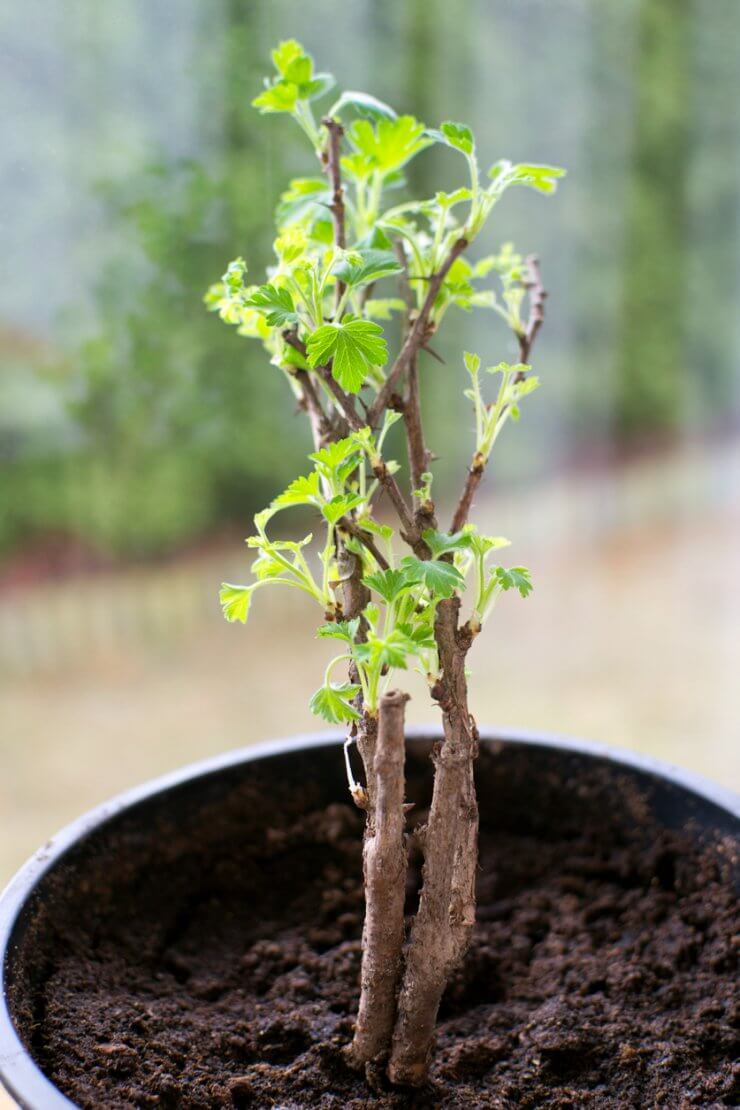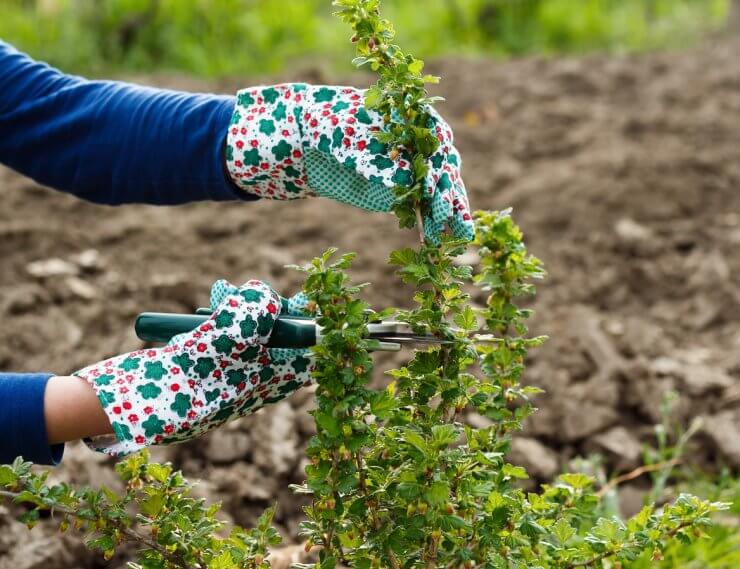
Gooseberry growing in a container
While gooseberry bushes grow best in the ground, you can grow gooseberries in a container as long as you can put it in a container at least 2 feet square and at least a foot deep (deeper would be better). You may also need a trellis (or a wall) for the plant to grow along. You should plan to keep it trimmed to prevent it from overgrowing its container. This would be a good situation to consider pruning it into more of a tree shape; it will fit better within its limited space.
The secret to successfully growing gooseberry bushes in containers is to have good light, a comfortable temperature and humidity for the bush, healthy soil, and consistent water. Hit all those targets and your container-grown gooseberry bush will be just fine!
Light
Gooseberry bushes would like six hours of direct (but not blazing) sun each day, but they’ll settle for three hours of direct sun and then some afternoon shade. The north-facing part of your garden, the north side of your house or shed, or a northern fence or wall would all be good gooseberry light zones.
Water
Keep your gooseberry’s soil moist, but not soggy. If the weather gets really dry, give your plants a good long, slow soaking with a hose—but whatever you do, don’t overwater your gooseberries! These plants really don’t like having wet feet.
Soil
If you’re doing container or raised bed gardening for your gooseberries, consult with your local garden center for the right soil to start with. If you’re planting in the ground, get your soil tested. Gooseberry plants like soil with a pH between 5.5 to 7.0. Amend your soil to that range before you plant your gooseberries.
When it comes to using fertilizer, gooseberries need a balanced (10-10-10) in the spring. Always take it easy on the nitrogen with gooseberry bushes: too much nitrogen will cause the plant to direct its energy to leaf production instead of growing fruit. And since we know from the Companion Planting section that green gooseberry leaves contain small amounts of hydrogen cyanide, we’d prefer to encourage fruit growth.
Pruning

Pruning a gooseberry bush
Gooseberry plants need consistent pruning—especially when you grow them in containers. You don’t want to overwhelm the root system, which has defined limits.
Prune in the spring. Cut off all 3-year-old branches. Prune away any weak branches or any branches that are crowded. When you’re done, you should only have a few shoots from the last two years of growth. Whether you’re trellising your plant or giving it topiary training, be sure there’s plenty of open space in the plant for good air circulation.
Have you grown gooseberry bushes in containers? Please tell us about your successes and challenges growing gooseberry bushes in containers.


 Previous
Previous


I tried one and it died in the winter.